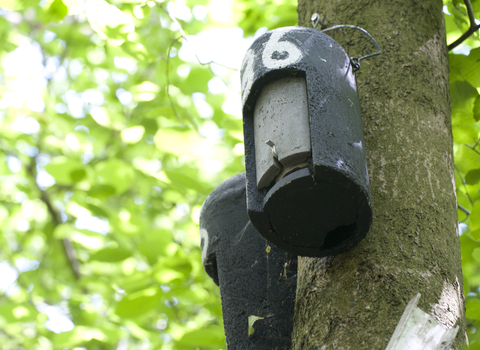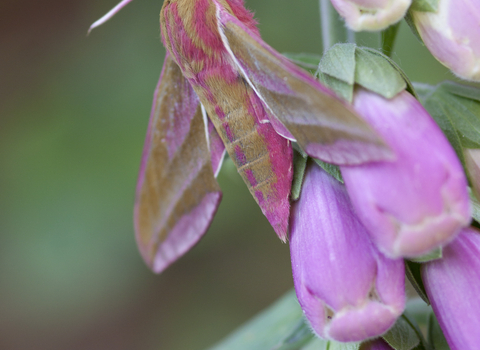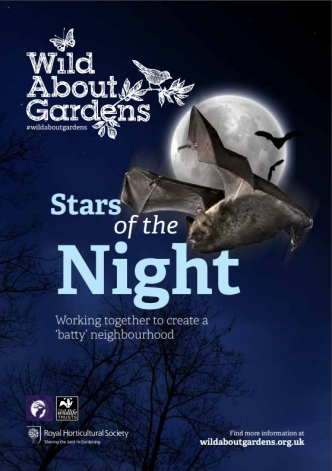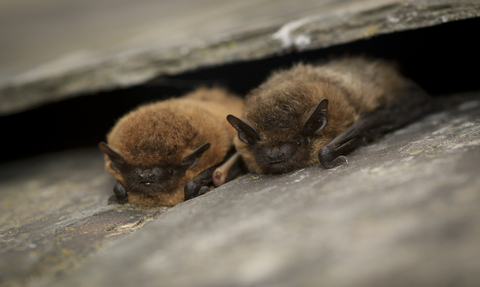
Common Pipistrelle (c) Tom Marshall
Brilliant Bats
Mysterious and unique, most of us will only catch a glimpse of bats as they dart through the night sky hunting for insects. Misunderstandings can arise from just not knowing much about them, despite the fact that one in four mammal species in the UK is a bat!
Not only are bats the only mammal capable of flight, but they also stand out as one of the most fascinating and diverse animal groups in the UK. A great indicator of biodiversity, bats can help scientists tell if a landscape is healthy or not.
We want everyone to know more about these stars of the night sky and why now, more than ever, they need our help and protection.
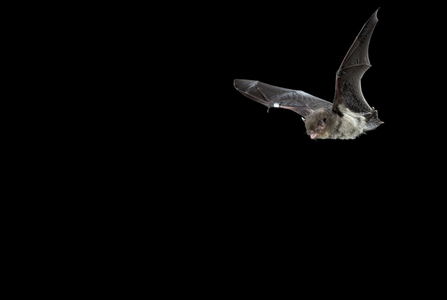
Nathusius’ Pipistrelle © Daniel Hargreaves
So why are bats so cool?
Find out with our top bat facts!
- They can navigate across continents and back to the same roost site every year…in the dark!
- Bats possess the fastest moving muscles ever found in mammals – these muscles in the bat’s larynx can contract 200 times a second, emitting a sound every time. On a decibel level this can be as loud as a road drill!
- Some species in the UK travel vast distances to remote cave systems across featureless landscapes to mate. They gather there from all across the surrounding countryside from multiple colonies, like some sort of bat nightclub.
- They are some of our rarest mammals in the UK with only a few thousand numbers of some species.
- They can fly around cluttered woodland at night without flying into things, and catch flying prey at the same time.
- They help control insects by feeding on them, including ones that are likely to bite you! A tiny Pipistrelle bat can eat up to 3,000 insects per night.
- They are capable of suspended animation which means they can slow down their vital functions without dying as they hibernate through the winter. They can drop their heartbeat to as low as 4 beats per minute during this time!
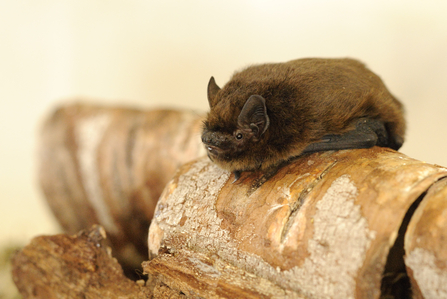
Pipistrelle bat © Amy Lewis
Our region is home to a remarkable diversity of bats, with 10 out of the 18 species found across all of Britain frequently spotted in the area. Some of the more elusive bat species, such as Natterer's and even Barbastelles, have been sighted on our nature reserves. Here are some of the unique bat species that call Hertfordshire and Middlesex home:
Common Pipistrelle
These bats are common and widespread. They are one of the two species most likely to be encountered.
Did you know? The Common Pipistrelle is so small, it can fit into a matchbox! Find out more.
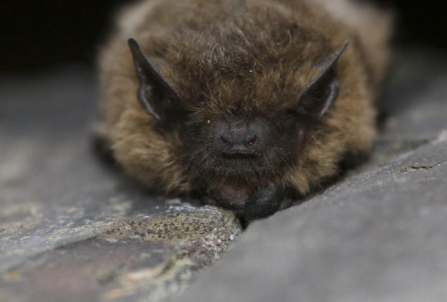
Soprano Pipistrelle
These bats are common and widespread. Like their relatives, the Common Pipistrelle, they are one of the two species most likely to be encountered.
Nathusius' Pipistrelle
This species is widespread, but still considered scarce. They are usually recorded foraging over large bodies of water.

Nathusius’ Pipistrelle © Daniel Hargreaves
Brown Long-eared
These bats are widespread and relatively frequently seen but not often encountered outside of roosts.
Did you know?
The Brown Long-eared bat is known as the 'whispering bat', because its voice is very quiet - no need to shout when you have such big ears! While at rest, it tends to either curl its ears back or tuck them under its wings. Find out more!
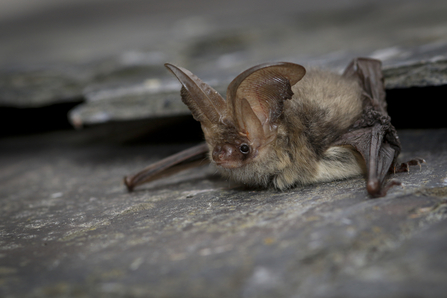
Brown Long-eared bat © Tom Marshall
Daubenton's
These bats are widespread and relatively frequently seen near still water.
Did you know?
Daubenton's bats can live for up to 22 years in the wild, but an average lifespan of 4 to 5 years is probably more common. Find out more!
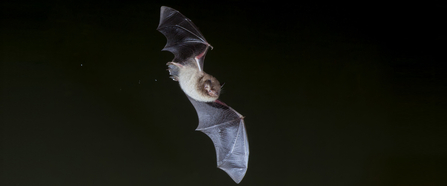
(c) Dale Sutton/2020Vision
Serotine
Serotine bats are widespread but scarce in Hertfordshire and Middlesex.
They are one of the first bats to appear at night and can be seen around lamp posts chasing moths, or at treetop height. Serotine bats like to roost and hibernate in old buildings in the south of the UK. Find out more!
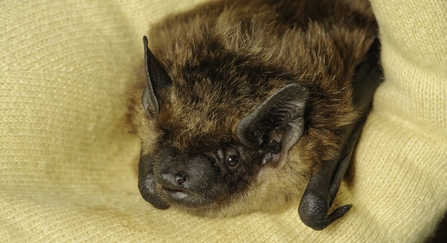
Orphan serotine bat (Eptesicus serotinus) hand raised by Hazel Ryan of the Kent Bat Group. Now an adult unfit for release. Kent, UK - Terry Whittaker/2020VISION
Noctule
These bats are widespread, but relatively scarce in Herts and Middlesex.
Did you know?
Although most bat calls require a bat detector to be heard by us, Noctule calls can heard by some adults and children. The calls range from 20 to 45kHz and peak at 25kHz. Find out more!
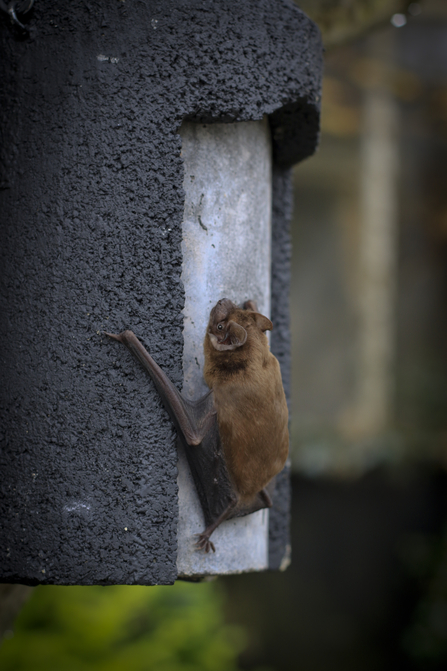
Noctule Bat © Tom Marshall
Barbastelle
These special bats are quite rare! They are only found in a few wooded river valleys in Hertfordshire and Middlesex.
Did you know?
Their scientific name "Barbastella" comes from the Latin for 'star beard' and is a reference to the white tips on the Barbastelle's fur. Find out more!
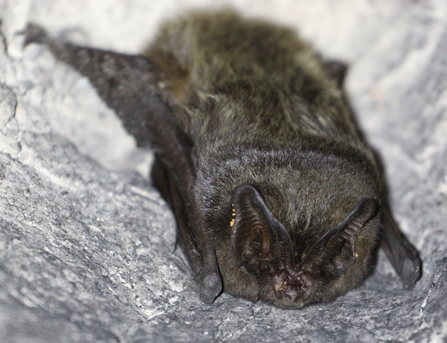
Barbastelle Bat © Jan Ebr
Bats need our help
What's truly terrifying about bats is that human activities in the last 60 years have caused a dramatic decline in their numbers. With roads and buildings replacing wild spaces, there are fewer of the wooded areas, ponds and open grass spaces that they rely on to feed and roost. On a more positive note, focused projects are helping us to learn more about different bat species and this knowledge is informing planning decisions, conservation management plans and showing us all what we can to do to help protect these creatures of the night.
What you can do
There are at least 15 million gardens in the UK, covering an area greater than all the National Nature Reserves combined - this means that our outdoor spaces are vitally important for wildlife, including bats. By taking small steps to make them more wildlife friendly we can make a huge difference!
Be a bat ambassador
Another way you can help bats is to encourage others to join our mission to protect bats and their homes.
Being a bat ambassador is as easy as telling your friends and family how cool and friendly bats really are. Share the fantastic bat facts you've learned and show them that bats are nothing to be scared of. We all can take action to protect these wonderful creatures and their homes. So, be a voice for bats and help us spread the word!
Download our free Stars of the Night booklet
The guide is packed with fascinating facts and invaluable ways you can help create a 'batty' neighbourhood.


